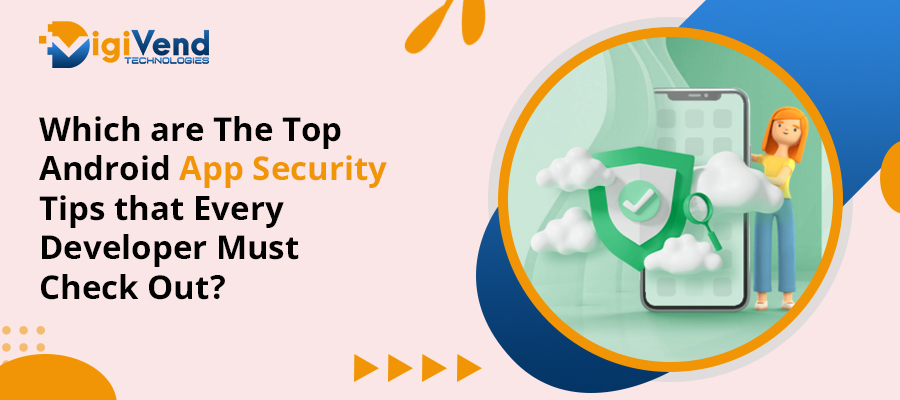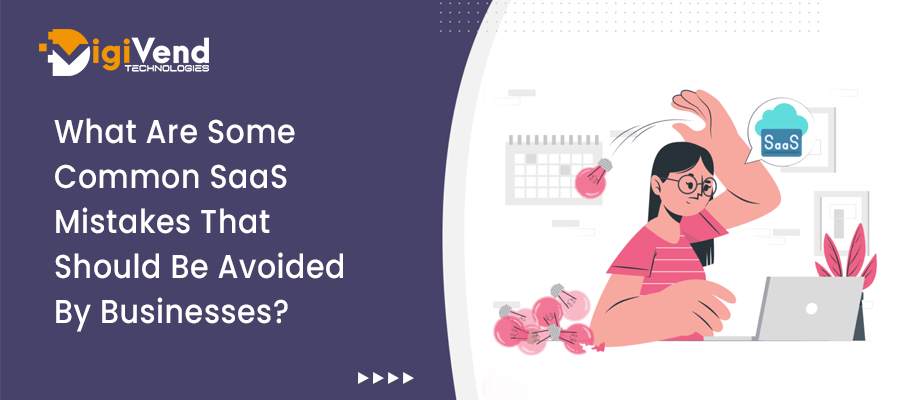As many advancements are taking place in mobile application development, they are putting user data and digital identities at huge risk due to the increased attacks of these apps. Some of these most common interfaces include malware, data breaches, and reverse engineering. This is not just impacting the user experience, but also the reputation and growth of the brands. Moreover,
the loss of user information is a great danger and their trustworthiness is harmed by the inadequate security of these applications.
Therefore, businesses must emphasize the security of applications on Android phones as they are being used for various important functions like banking and shopping. Providing safety to them will protect user information without sacrificing their delightful experience. Encryption, secure coding, authentication, and updates are all part of Android App Development Services. In addition to providing a safe and useful user experience, it even provides a competitive advantage, customer trust, and regulatory compliance.
What is the Ultimate Guide to Strengthen the Android App Security
Nearly 90% of all internet users, in today’s world, access the internet via a mobile device due to the surge in their usage in recent years. But, this also indicates that there are more people for hackers to prey on, which makes endpoint security for phone devices even more important.
For those who do not know what is the security of a smartphone application, to put it more simply, this safety is the combination of technology, tools, and security procedures used to prevent unauthorised access, misuse, alteration, or damage to mobile apps. To learn how to execute this practically, let’s move further.
Which 10 Practices Are Best for Securing Your Android Application That You Should Know?
The user expects phone apps to protect their personal information as cyber threats and data breaches are becoming more common. Therefore, in order to gain the confidence and trust of your consumers, it is imperative that strong security measures are employed when developing applications for smartphones. To ensure this, you must incorporate the below-mentioned really crucial strategies while developing these apps to provide them solid protection.
- Encryption of Data
Developers must use a strong encryption technique to protect sensitive data while it’s in transit and at rest. Robust encoding techniques, such as AES, protect critical insights that the device transports over networks and keeps locally, including financial information and user passwords. To guard against unauthorised access and manipulation, they should also think about implementing end-to-end encoding from the platform to the backend servers.
- Safe Authentication
By guaranteeing that users are identified before they can access your app, verification serves as a barrier to stopping misuse of your application. You can establish rigorous viewer identity verification with multi-factor authentication and strong password restrictions, along with some verification techniques to create a secure environment. Biometric identification features, such as fingerprint or facial recognition, can also be used as an additional safety measure. This enables customers to utilise these conveniences without jeopardising their security.
- Continual Updates for Security
Beyond the basics of security, you should always be on the lookout for potential protection threats and take proactive steps to address them by updating apps regularly with safety patches and other changes. For this, create a mechanism wherein updates are applied quickly to prevent vulnerabilities and you receive notifications about assurance guidelines or advisories from the platforms, libraries, and frameworks that your application depends on. Make sure to establish a planned schedule for releasing security updates for the duration of the app life cycle to guarantee ongoing defense against potential new dangers.
- Code Disguisement
The procedure renders programs difficult or impossible to disassemble or decompile, making it far more difficult for hackers to understand the returned application code. By doing this, developers may better safeguard their apps against intellectual property theft and reverse engineering, as it becomes tougher for cyber attackers to decipher the logic of the program and retrieve crucial data. Although using these tools could be costly, they serve as a vital defence against more significant performance sacrifices.
- Secure Interaction
Mobile App Development Companies use the most recent encryption techniques, such as HTTPS, to make sure that adequate safety measures are taken. Through the use of advanced encryption, HTTPS secures data transfer by preventing its interception. Furthermore, man-in-the-middle attacks and tampering with the transmitted information are not conceivable. To verify the authenticity of SSL/TLS certificates and guard against certificate-based manipulation, you should also use certificate pinning.
- Implement Appropriate Session Management
It is essential to carry out the session management procedure correctly to prevent user accounts from being compromised through any means. For this, it’s important to incorporate session timeouts, token-based authentication, and secure session storage mechanisms to stop illegal access to personal credentials and other sensitive data from compromised accounts or systems. Additionally, make sure that your sessions end when the customer logs out if their account is removed, or for no longer than a reasonable amount of time without any action.
- Management of Permissions
When installing an application, strictly adhere to the least amount of access that users are granted. Pay particular attention to the privileges that are necessary for the app to perform its primary job, and keep the scope of permissions limited. By doing this, you can shield your consumers from many vulnerabilities. Moreover, they should provide a simple and safe permissions paradigm by periodically reviewing and reevaluating the need for requested permissions.
- Validation of Input
It is crucial to ensure that user input is validated and sanitised to the point that common vulnerabilities like buffer overflows, SQL injection, and cross-site scripting are minimised. The adoption of a sophisticated input-checking method that hinders hacker attempts from both the client and the server should be the primary prerequisite for an ideal tight security system. For this reason, use input validation frameworks and libraries to guarantee data integrity and to become insensitive to injection threats.
- Utilise reputable SDKs and Libraries
Extreme caution and care must be used when integrating third-party libraries and software development kits (SDKs) into your apps. Therefore, choose well-established archives whose reputation is supported by substantiated security records. Additionally, pay attention to the periodic security features and bug patch upgrades that they implement. Also, conduct safety audits and due diligence investigations, moreover, the contract counteracts in a way that will prevent subpar or incorrect libraries from the source code.
- Code Reviews and Security Testing
Prioritise code reviews and security testing throughout the app development process to facilitate the early detection and fixing of security flaws. Potential risks and safety drawbacks are found by using protection testing techniques including penetration testing, static code analysis, and dynamic application security tests. You may strengthen your security application posture and improve assurance by using automated defence examining tools or by looking for QA evaluating services for penetration tests.
In addition, you can create code review procedures as well to encourage safe coding techniques and guarantee development teams follow the best security practices.
Why Securing Smartphone Applications is So Crucial?
Other than protecting the user’s information and data, getting the Android apps secure by using Mobile App Development Services, the following are major advantages of developing them with effective security practices in mind:
Data protection: Utilising compelling assurance strategies throughout the whole app development process decreases the likelihood of information leaking. Data breaches and unwanted access can be avoided by developers using secure communication protocols like HTTPS and encrypting data.
Decreased Security Risks: By putting solid defence measures in place, you may help find and eliminate common malware and threats like SQL injection, cross-site scripting, and shoddy authentication techniques. This will strengthen the app’s critical safety layer.
Enhanced User Reputation and Trust: When safety is prioritised, users are more likely to trust. By adhering to robust protection techniques, you can be sure that the sensitive data or privacy of your consumers is well-protected. It also enhances your brand’s credibility and user experience, fostering long-lasting relationships with customers.
Enhances App Performance: Sturdy security methods used in application development eliminate the threats of security-related performance bottlenecks, optimise code efficiency, and avoid overloading defence tests on runtime processes. This can improve the overall stability and performance of your smartphone application.
Saves Money: Due to the reduced pricey breaches, legal fees linked with non-compliance, and regulatory fines, the adoption of security practices in Android App Development Services results in cost savings. Additionally, it avoids the financial consequences of service interruptions, downtime, and reputational harm.
CONCLUSION
In the current mobile-centric era, users and organisations alike rely significantly on phone apps. Thus, proper and reliable security of Android applications must be given top priority to protect against changing defence risks. By following the above-mentioned recommended procedures, you may strengthen your smartphone app and reduce safety threats in this ever-changing environment.
However, applying these strategies effectively can be hard for you. But, DigiVend Technologies is here to help you in practising these methods strongly and smartly. Our team of talented and qualified mobile application developers can provide you the highly secure and user-friendly phone apps for your company. So contact us today and experience our exceptional Android application development services.
FAQs
- What are the most potential risks for mobile applications?
Data breaches, virus attacks, reverse engineering, SQL injection, cross-site scripting, inadequate authentication techniques, and unauthorised access are among the most common threats to mobile apps.
- Why is it important to safeguard Android Applications?
Because of the cyber threats including malware, data breaches, and reverse engineering, smartphone app security is essential. It’s critical to preserve user data, guarantee reliability, and uphold the company’s reputation.
- Which strategies can be used for guarding your phone apps from any data risk?
Use encryption, secure authentication, regular updates, code obfuscation, safe interaction, session management, permission management, input validation, reliable SDKs, code reviews, and security testing to protect your Android app from data dangers.
 ISO 9001:2010
ISO 9001:2010 INDIA: +91 8447 380 102
INDIA: +91 8447 380 102 USA: +1 (321) 800-5881
USA: +1 (321) 800-5881







